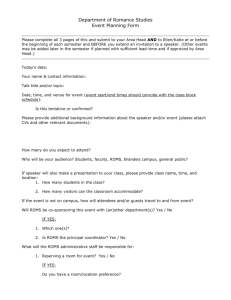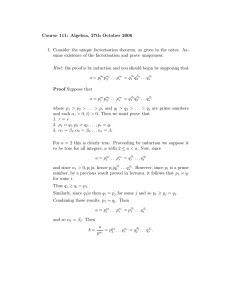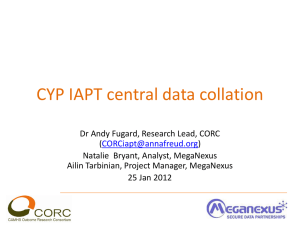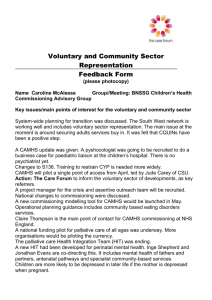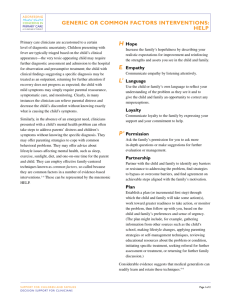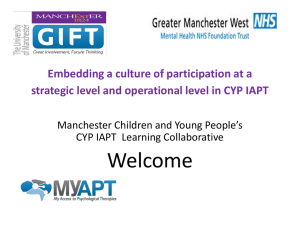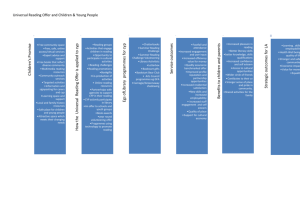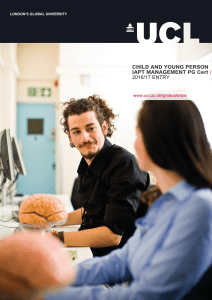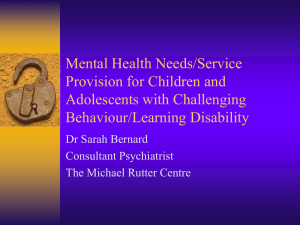Can CYP IAPT Routine Outcome Measures be used in a
advertisement
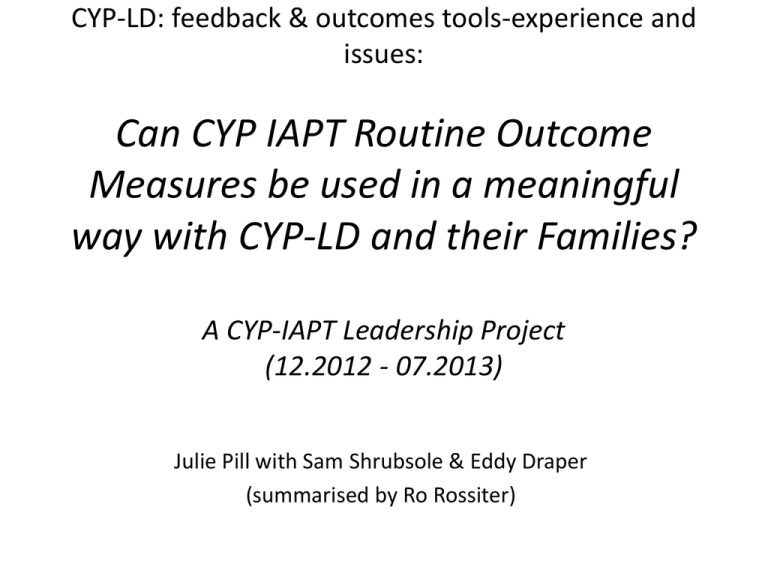
CYP-LD: feedback & outcomes tools-experience and issues: Can CYP IAPT Routine Outcome Measures be used in a meaningful way with CYP-LD and their Families? A CYP-IAPT Leadership Project (12.2012 - 07.2013) Julie Pill with Sam Shrubsole & Eddy Draper (summarised by Ro Rossiter) Project Background: • Use of ROMS with CYP-LD & families not addressed in the CYP-IAPT user guidelines (CYP-IAPT 2012). • Equalities legislation- reasonable adjustments • Health inequalities • Address unmet local/national practice need Project Aim: To consider views of: • clinicians from LD CAMHS and Community CAMHS • children, young people and their parents or carers who access these services (n=20 CYP-LD & families across Swindon, Wiltshire, Bath & NE Somerset (Oxford Health NHS Foundation Trust) • To inform/improve local practice Before: • Meet with CYP & families to discuss project • Benchmark current practice • Hear about clinicians experiences, identify any potential barriers (Kline, 2009 positive and negative assumption exercise) - may affect ability to embed ROMS into daily clinical practice 14 clinicians – focused trial SDQ, RCADS, SLDOM, goal based and ESQ feedback 14 parents contacted- 4 questions for feedback Before: -ve assumptions • limited experience • added burden • unsure how accessible, meaningful and appropriate the tools would be (?measuring changes in child’s behaviour not family’s ability to understand/manage it better) • concerns families would not value ROMS +ve assumptions • therapeutic value of ROMS- how can clarify goals • support the interventions not to drift • can capture small changes made over an extended period • may provide a method of capturing complexities of working with this group- could help inform commissioners about this specialised area of work Project considered “technical” issues of tools & process as well as social, cultural and organisational issues (Bridges, 2009; Leigh & Maynard, 2002; Schein 2004; Sivers, 2010; Kotter, 2012) After: Findings from qualitative & quantitative data (practitioners and families) enabled us to: • learn together and share good practice to improve the way we are using ROMS in our clinical practice • produced a video recording incorporating our helpful hints, planning to develop into a training pack for others across the trust • Link to developing national guidance through CYPIAPT OEG • Continue learning by doing – more on this in afternoon!
